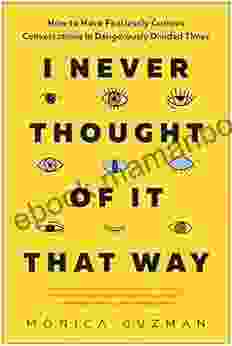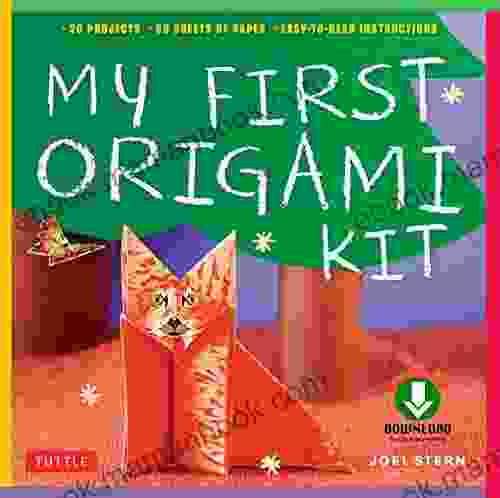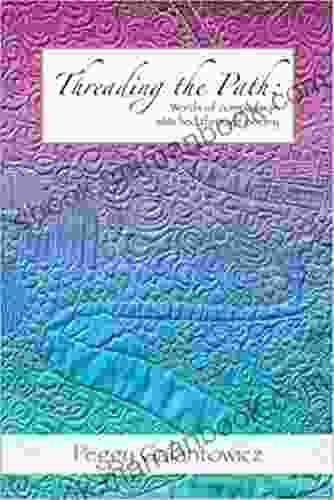Critical Tools for the Intercultural Communication Classroom: Empowering Equitable Dialogue and Understanding

In today's increasingly interconnected and globalized world, intercultural communication is essential for fostering meaningful connections, collaboration, and mutual understanding. The classroom provides a vital platform for equipping students with the critical tools they need to navigate the complexities of intercultural interactions and become effective global citizens.
This article explores five indispensable tools that empower equitable dialogue, foster empathy, and promote cross-cultural understanding in the intercultural communication classroom:
5 out of 5
| Language | : | English |
| File size | : | 3187 KB |
| Text-to-Speech | : | Enabled |
| Screen Reader | : | Supported |
| Enhanced typesetting | : | Enabled |
| Word Wise | : | Enabled |
| Print length | : | 198 pages |
- The Intercultural Communication Cube
- Empathy Maps
- Perspective-Taking Exercises
- Cultural Immersion Simulations
- Critical Reflection and Self-Assessment
1. The Intercultural Communication Cube
Developed by C. A. Tomalin and S. S. Sandahl, the Intercultural Communication Cube is a visual model that highlights six dimensions of intercultural communication:
- Context: The physical, social, and cultural environment in which communication takes place.
- Communicators: The individuals involved in the interaction, including their cultural backgrounds, values, and beliefs.
- Code: The verbal and nonverbal symbols used to convey meaning.
- Channels: The means through which messages are transmitted, such as face-to-face, written, or electronic.
- Content: The information, ideas, and emotions that are being communicated.
- Culture: The shared values, beliefs, norms, and practices of a group that influence communication.
By analyzing these dimensions in various communication situations, students can identify potential sources of misunderstanding and develop strategies for effective intercultural communication.
2. Empathy Maps
Empathy maps are a tool for fostering empathy and understanding by encouraging students to step into the shoes of another person from a different cultural background. They involve creating a visual representation of a specific individual, including their demographics, motivations, thoughts, feelings, and pain points. By considering these factors, students can develop a deeper understanding of the experiences and perspectives of others, leading to more compassionate and empathetic communication.
3. Perspective-Taking Exercises
Perspective-taking exercises involve asking students to examine a situation or issue from multiple perspectives. This can be done through role-playing, simulations, or hypothetical scenarios. By taking on the role of individuals from diverse cultures, students can experience firsthand the challenges and opportunities of intercultural communication. They develop a greater appreciation for the complexities of different worldviews and learn to approach interactions with openness and curiosity.
4. Cultural Immersion Simulations
Cultural immersion simulations are immersive experiences that provide students with an opportunity to engage with people from different cultures in a controlled setting. This can involve simulations of international travel, business meetings, or everyday encounters. Through these simulations, students can practice their intercultural communication skills, challenge their assumptions, and gain a deeper understanding of the complexities of cross-cultural interactions.
5. Critical Reflection and Self-Assessment
Critical reflection and self-assessment are essential for ongoing growth and development in intercultural communication. Students should be encouraged to reflect on their own communication experiences, both positive and negative. By identifying their strengths and weaknesses, they can develop strategies for improvement and become more effective intercultural communicators. Regular self-assessment allows students to track their progress and identify areas where they need additional support.
The tools presented in this article provide a solid foundation for empowering equitable dialogue and understanding in the intercultural communication classroom. By integrating these tools into their teaching practices, educators can equip students with the critical thinking, empathy building, and perspective-taking skills necessary to navigate the complexities of intercultural interactions and become effective global citizens. Ultimately, our classrooms should be microcosms of the diverse and interconnected world we live in, fostering genuine understanding and connection across cultures.
5 out of 5
| Language | : | English |
| File size | : | 3187 KB |
| Text-to-Speech | : | Enabled |
| Screen Reader | : | Supported |
| Enhanced typesetting | : | Enabled |
| Word Wise | : | Enabled |
| Print length | : | 198 pages |
Do you want to contribute by writing guest posts on this blog?
Please contact us and send us a resume of previous articles that you have written.
 Top Book
Top Book Novel
Novel Fiction
Fiction Nonfiction
Nonfiction Literature
Literature Paperback
Paperback Hardcover
Hardcover E-book
E-book Audiobook
Audiobook Bestseller
Bestseller Classic
Classic Mystery
Mystery Thriller
Thriller Romance
Romance Fantasy
Fantasy Science Fiction
Science Fiction Biography
Biography Memoir
Memoir Autobiography
Autobiography Poetry
Poetry Drama
Drama Historical Fiction
Historical Fiction Self-help
Self-help Young Adult
Young Adult Childrens Books
Childrens Books Graphic Novel
Graphic Novel Anthology
Anthology Series
Series Encyclopedia
Encyclopedia Reference
Reference Guidebook
Guidebook Textbook
Textbook Workbook
Workbook Journal
Journal Diary
Diary Manuscript
Manuscript Folio
Folio Pulp Fiction
Pulp Fiction Short Stories
Short Stories Fairy Tales
Fairy Tales Fables
Fables Mythology
Mythology Philosophy
Philosophy Religion
Religion Spirituality
Spirituality Essays
Essays Critique
Critique Commentary
Commentary Glossary
Glossary Bibliography
Bibliography Index
Index Table of Contents
Table of Contents Preface
Preface Introduction
Introduction Foreword
Foreword Afterword
Afterword Appendices
Appendices Annotations
Annotations Footnotes
Footnotes Epilogue
Epilogue Prologue
Prologue J W Helkenberg
J W Helkenberg Marvin A Henry
Marvin A Henry Clive Barker
Clive Barker Davidson King
Davidson King Geoffrey Thorne
Geoffrey Thorne Terry Taylor
Terry Taylor Robert Field
Robert Field Kevin Roberts
Kevin Roberts Stephen Costanza
Stephen Costanza V C Andrews
V C Andrews Robin Behn
Robin Behn Janice P Nimura
Janice P Nimura Jason Deere
Jason Deere Isabelle Hardesty
Isabelle Hardesty Susan Senator
Susan Senator Chris Pegula
Chris Pegula Yoko Danno
Yoko Danno Sandee Westmoreland
Sandee Westmoreland Vj Esguerra
Vj Esguerra Jill Nojack
Jill Nojack
Light bulbAdvertise smarter! Our strategic ad space ensures maximum exposure. Reserve your spot today!

 Cruz SimmonsYears Of Soul Songs Love And Tender Musings: A Comprehensive Exploration of...
Cruz SimmonsYears Of Soul Songs Love And Tender Musings: A Comprehensive Exploration of... Dominic SimmonsFollow ·13.5k
Dominic SimmonsFollow ·13.5k Steve CarterFollow ·3.3k
Steve CarterFollow ·3.3k Thomas PynchonFollow ·7k
Thomas PynchonFollow ·7k Theodore MitchellFollow ·5.9k
Theodore MitchellFollow ·5.9k John SteinbeckFollow ·14.1k
John SteinbeckFollow ·14.1k Cason CoxFollow ·16.2k
Cason CoxFollow ·16.2k Colin RichardsonFollow ·4.6k
Colin RichardsonFollow ·4.6k Hunter MitchellFollow ·10.5k
Hunter MitchellFollow ·10.5k

 Ross Nelson
Ross NelsonHow to Have Fearlessly Curious Conversations in...
In a world increasingly polarized by...

 Isaac Mitchell
Isaac MitchellFew Things to Keep in Mind for a Successful Introduction...
Writing an series...

 Dallas Turner
Dallas TurnerThe Ultimate Easy Key for Beginners: A Comprehensive...
Welcome to the world of...

 Mitch Foster
Mitch FosterMy First Origami Kit: Ebook Downloadable Material...
Origami, the...

 Tony Carter
Tony CarterQuick, Easy, and Healthy Recipes to Treat Gut Infections...
Gut infections are a common problem that can...

 Adrian Ward
Adrian WardThe Mechanism Behind Italian Poetry In English: Poesia...
The world of...
5 out of 5
| Language | : | English |
| File size | : | 3187 KB |
| Text-to-Speech | : | Enabled |
| Screen Reader | : | Supported |
| Enhanced typesetting | : | Enabled |
| Word Wise | : | Enabled |
| Print length | : | 198 pages |










